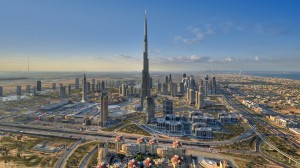By Niraj Masand www.business24-7.ae
It was billed to be the ‘Burj Effect.’ Today, some 180 days after the opening of Burj Khalifa, the world’s tallest building, there is a renewed sense of optimism that commercial establishments lining Sheikh Zayed Road in Dubai are poised for a revival of fortunes.

Despite supply having strengthened – with several dedicated projects coming on line – the prospects of commercial real estate picking up steam is real.
This is primarily led by the resource long-term planning adopted by large scale businesses, which use the prevailing economic climate to make prudent investments.
One of the driving forces in this emerging robust outlook for commercial real estate in Dubai has been the recent debt restructuring measures announced for Dubai World.
Favourably received by all stakeholders, this has helped boost investor confidence and businesses are more upbeat about the rebound of the Dubai economy than ever before.
The opening of Burj Khalifa was an added confidence booster, which underscored the project delivery commitment of developers in Dubai.
Burj Khalifa’s appeal lies in its ability to have energized the surrounding 500-acre Downtown Dubai community.
In addition to the luxury commercial suites within the tower, Downtown Dubai has several dedicated office clusters, including the popular Emaar Square, which is now the headquarters for several corporates.
The destination also has a strong retail and hospitality buzz, which helps in driving demand for commercial real estate.
The Downtown Dubai and Business Bay communities, undisputedly, are at the heart of the commercial dynamic of Dubai. With several more developments to enter the supply stream, clearly there will be plenty for customers to choose from.
They also stand to benefit from the revised terms that developers and landlords are willing to consider including more flexibility in the number of cheques and other concessions.
Customers today have a bevy of commercial real estate options with attractive price points and featuring modern business-friendly amenities.
These include Jumeirah Lake Towers, for example, where prices are in the range of AED 800 to AED 1,000 per sq ft.
Giving some fillip to commercial property is the propensity of some businesses to leverage the current economic environment and the availability of commercial real estate at attractive rates to consolidate their operations under one roof.
They are opting for newer locations and newer buildings, which offer modern office infrastructure support. The advantages of capitalizing on the current supply of commercial real estate are many.
According to analysts, it is only a matter of time before Dubai makes a robust bounce-back.
The economic indicators continue to be healthy, and the Government is emphasizing on developing the small and medium business sector, which is the backbone of the economy.
The growth of the SME sector has the potential to power commercial real estate.
Along with other growth areas including exhibitions, the business sector has attractive growth prospects.
Dubai World Trade Centre expects their exhibitor participation to grow by 12 per cent, and in March 2010 alone, had hosted some 20 of the region’s leading exhibitions and conferences.
These are potential drivers for new business and thus for commercial real estate.
The opening of Dubai Metro has also been instrumental in supporting the commercial real estate portfolio along Sheikh Zayed Road, by easing access.
The coming months will, however, be of crucial importance.
While new commercial property is being completed, the advent of the summer months can be a dampener for demand.
But therein lies the opportunity for the discerning and financial prudent planners.
Identify a location of choice, evaluate the facilities, discuss requirements with landlords and gaining a valuable commercial asset for the long-term is now more promising than ever before.
Niraj Masand is Manager Commercial Leasing of Hamptons International. The views expressed in this article are his own and not necessarily that of the organisation.












